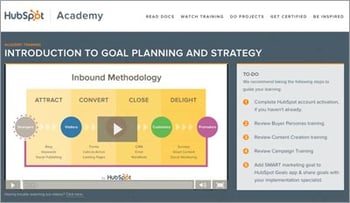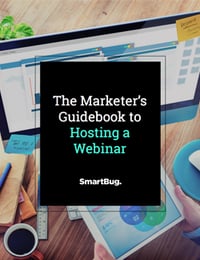
7 Tactics to Improve Your Webinar Attendance Rate
August 24, 2015
It’s actually pretty amazing how consistent webinar attendance rates are across topics, industries, and sponsors. Basically, for any given live webinar, you can expect about half of your registrants to actually show up. My experience putting together dozens of webinars consistently showed this statistic to be true, with very little deviance. A Quora article on the topic says anywhere from 40-60% is normal, with 50% being the average.
If you’re getting lower than 40% though, it’s time to re-evaluate. Here are seven ideas for how to increase your webinar attendance rate. (Warning: Some I’ve tried and some I haven’t, so proceed at your own risk.)
1. Give something away
Everyone loves freebies – capitalize on this by offering a gift to attendees only. The offer should be something related to the topic of the webinar, if possible. One idea is to give away a book or gated article that your speaker has written on the subject. Another option would be to create your own premium content from the webinar – perhaps an exclusive checklist or consultation that they can only get by attending.
It doesn’t have to be content, though. Depending on your budget, something else might be feasible. For one webinar, we offered funny, minimally branded t-shirts to the first 10 people who tweeted about the webinar. Offering something like this to those that come to the event can be a great way to get more people to log in (as long as the item is desirable and not junk).
Less original idea: I’ve seen webinar sponsors give away an Amazon gift card to all attendees (which can get expensive quickly) or having a drawing for a few gift cards (less of a pull for registrants).
2. Emphasize scarcity
If you’ve never watched the “Science of Persuasion” YouTube video summarizing the findings of the book, Influence, I highly recommend it (embedded at right for your viewing pleasure). This suggestion – based on the principle of “scarcity” – comes directly from there.
For some reason, humans respond when there is the notion of only-so-many-can-get-it. And you can use this to your advantage.
For one really popular webinar at my last job, we sent an email 1-2 hours before we started about there being “limited room” and to make sure to log in early. (We had a max capacity of 500 attendees due to our license of GoToWebinar.) This tactic alone boosted our rate to 60%.
I imagine over time this strategy could go either way – either your audience would tune out the message that there’s only so much room or your audience would come to expect that only 100 people can join, for example, and so if the topic is important to them, they should always log in early. (If anyone has tried the “scarcity principle” over an amount of time, I’d love to hear your results!)
3. Don’t talk about your product
After the amazing webinar I just mentioned (which was educational in nature), we offered a product demonstration webinar for those further along in the buyer’s journey.
We promoted the webinar to the same in-house list and used the same promotional methods. Some of the registrants were new and some had come to the last webinar. I assumed that, obviously, we’d get less people to register because the webinar was about our product; however, the webinar attendance rate was also lower, at 40% compared to our typical 50%.
While a product demonstration may make sense to offer as BOFU content, talking about your product all the time is certainly going to turn away your audience. Make sure each webinar is promoted accurately as either educational or product-oriented and make sure there’s a good mix of both in your schedule.
4. Lessen frequency
In today’s digital age, people are bombarded with content and offers constantly. If you are noticing a steady decline in your registration numbers and attendance rate, either your topic isn’t relevant (a different subject all together) or it’s possible you are having too many events.
Test and find out what works best for your audience. Once a month works great for many B2B companies whereas other spaces (such as education firms like Marketing Profs) couldn’t possibly do anything less than once a week.
5. Incorporate interactivity
The obvious benefit to attending a webinar live is the interactivity it provides over a streamed event. This is usually incorporated into a live Q&A at the end but making your webinars more interactive overall will entice registrants over time to want to participate.
 A great example of webinar interactivity is HubSpot’s academy training: Introduction to Goal Planning and Strategy. If you listen to the recording, you’ll notice that the speaker, Chris LoDolce, asks the attendees questions and waits for them to respond throughout the webinar. He also gives them time to complete exercises like creating their own SMART goals and sharing them with the group.
A great example of webinar interactivity is HubSpot’s academy training: Introduction to Goal Planning and Strategy. If you listen to the recording, you’ll notice that the speaker, Chris LoDolce, asks the attendees questions and waits for them to respond throughout the webinar. He also gives them time to complete exercises like creating their own SMART goals and sharing them with the group.
6. Don’t record
Okay, this might be scary. Offering a recording of your webinar to people that missed it is considered a best practice in the marketing world. That way you have the ability to not only offer it to the 50% that didn’t attend, but you can also use it as a content offer on your website for new visitors. Win-win.
However, it depends on your goal. If your goal is to increase engagement with your company and you are offering a truly interactive webinar, not recording the session could potentially increase the attendance rate (if you announce that there will not be a recording and people know they have to attend or they will miss it).
By not offering a recording, you’re also bucking “what everyone else is doing,” which adds an element of intrigue – wait, why is that webinar so different that they aren’t offering a recording?
But still, not for the faint of heart.
7. Change your metrics
“Webinar attendance rate” is generally defined as people who registered and attended live versus people who registered but didn’t attend. However, registrants often have conflicting meetings or they are traveling that day or they might prefer to watch webinars in the evenings after the kids have gone to bed.
Instead of tracking a straight number of attendees versus non-attendees, try adjusting the metric to include registrants who watch the recording later as they are engaging with your content, just at a different time. You may find that more registrants than you thought are viewing your webinar. If so, this may be a better statistic of webinar success to track.
---
And that’s it! Seven ideas for improving your webinar attendance rate. For more stellar suggestions on how to increase your webinar attendance rate, check out the conversation over on inbound.org.

About the author
Jessica Vionas-Singer was formerly the Senior Director of Client Success at SmartBug Media where she lead a team of SmartBugs who focus on HubSpot onboarding for clients new to the system and other project-based work, oversaw new employee onboarding, and rolled out new process and procedures within the Client Services department. She fell in love with marketing at her first job at a technology company specializing in credit evaluation software. Her background includes more than 20 years of marketing experience in content creation and lead-driving tactics, online presence and blog creation, social media engagement, budgeting and project plans, webinar and trade show event management, public relations, comprehensive promotional campaigns, and analytics. Jessica has a BS in Sociology from Montana State University – Bozeman. Read more articles by Jessica Vionas-Singer.






